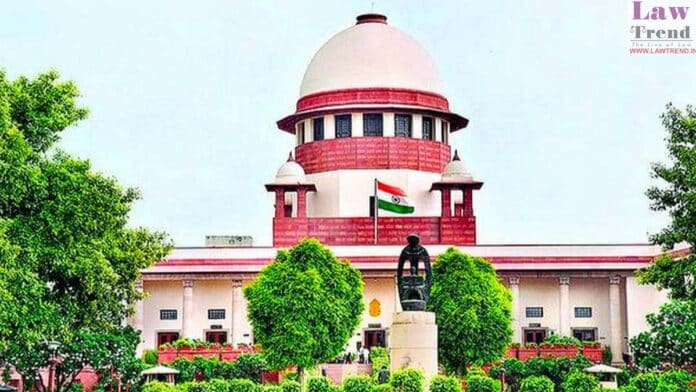The Supreme Court on Wednesday termed as “manifestly arbitrary” the changes made by the Kerala High Court in the criteria for selection of additional district judges (ADJs) in the state in 2017.
A five-judge constitution bench headed by Chief Justice D Y Chandrachud, however, refused to “unseat” those who were selected for the state higher judicial services six years ago, observing such a step will be against “public interest” and “harsh” on them.
It also said the unsuccessful petitioners, as a consequence, cannot be inducted into the judicial services. Many of them might already be active in the legal profession, the court said.
The bench, also comprising Justices Hrishikesh Roy, P S Narasimha, Pankaj Mithal and Manoj Misra, was critical of the changes made by the full bench of the Kerala high court to the criteria for selection.
“It was clear that merit list would be aggregate of written and viva voce and clarified that there would be no cut off for the viva. We conclude that decision of the HC was ultra vires the rules of 1961 and is manifestly arbitrary,” the bench said.
The constitution bench was dealing with as many as 17 petitions from several high courts, including the one questioning the Kerala High Court decision.
The top court had on November 24, 2022 agreed to form a constitution bench for examining the larger issue raised in the petitions about whether “the rules of the game” for appointment to various posts in the judiciary can be changed mid-way through the selection process.
The constitution bench will resume the hearing on the broader legal question on Thursday.
According to the procedure prescribed under the Kerala State Higher Judicial Service Special Rules, 1961, the aggregate marks obtained by candidates in the written test and viva voce cumulatively were to be considered for appointment as ADJs.
However, the high court changed the selection criteria mid-way and fixed a minimum cut off for calling the candidates for viva voce, that too after completing the entire examination process.
“It is evident that when process of selection began the candidates were put to notice that merit list would be based on aggregate of written and viva and there was no cut off applicable for marks to be obtained in viva for preparing the merit list.
“The decision to prescribe a cut off for viva was after the viva was conducted and the process adopted by the HC suffers from several infirmities,” the bench said.
The top court said it was contrary to the relevant rules.
The apex court found several infirmities in the decision of the Kerala high court which had later said the length of experience at Bar will be considered for selection as ADJs.
The top court, however, said the candidates, who were appointed due to the flawed policy, cannot be unseated as it will be against public interest. It noted the selected candidates were serving as judges for the last six years.
“We cannot direct unseating of candidates who are performing judicial function since it is against public interest…
“It cannot be lost sight of that all selected candidates are qualified for judicial office and unseating them would be harsh (on them) and higher judiciary would lose the candidates with experience,” the bench said.
It said the unsuccessful petitioners, therefore, cannot be inducted into the higher judiciary.
“Them not qualifying in higher judicial service is not a reflection of their merit and shall not come in their way,” the court said.
Also Read
The court said it has not considered the broader issue referred to the constitution bench as to whether the rules for public appointment can be changed during the selection process. “…. the question is kept open,” the bench said.
According to the records, 25 per cent of the vacancies for ADJs were to be filled with candidates selected from the Bar, and the examinations were to held in two parts — written and viva voce.
As per the procedure, a total of 300 marks were allotted for the written examination involving two papers of 150 each, besides 50 marks for the viva voce. The candidates were to be selected on the basis of their performance in both the tests.




